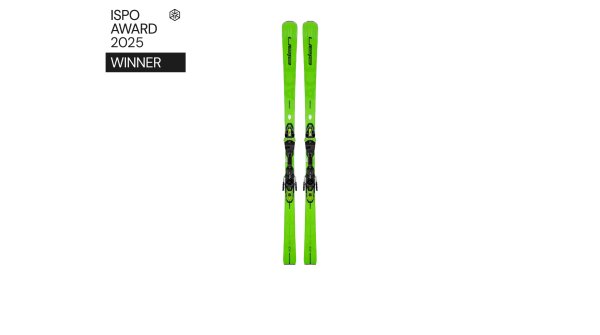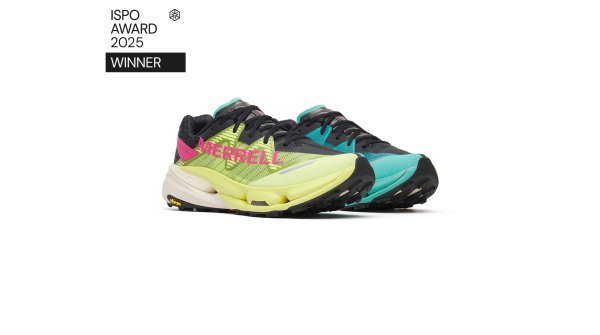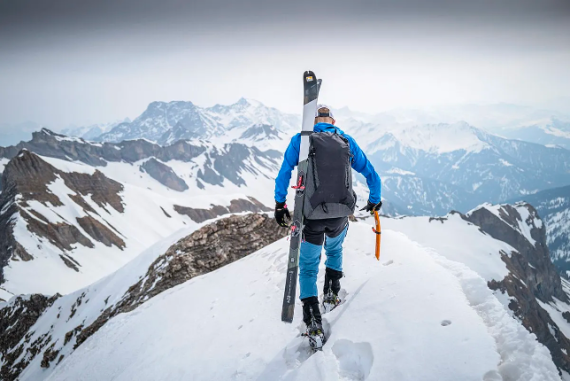
- comfort on the ascent
- safety and support on the descent
- safety in the event of a fall when the release from the binding is necessary
- ease of transition from ascent to descent mode
- and last but not least, skiing performance, as it is the component that transfers the impulse from the ski boots to the ski
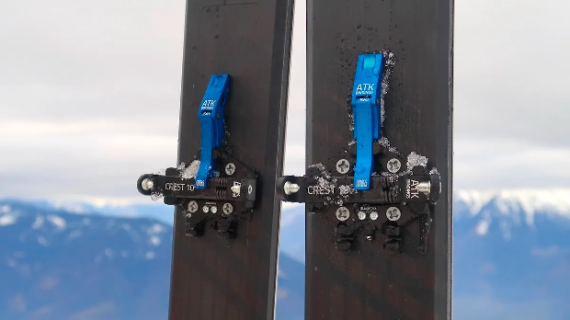
The market nowadays offers four types of ski bindings: Race, Speed Touring, Touring, Free Touring. We can compare this offer to what we find in the bike world. We can indeed purchase parts such as brakes which combine lightweight and consistent performance.
These are the main parts of modern ski touring bindings:
- the front jaw with a "pin" clutch which fits the front part of the boot
- the front lever for complete locking of the toe during ascent
- the front attachment point for crampons
- the heel counter (non-rotating and only on race versions) with pins on which the rear part of the boot can be locked
- the heel lift system to follow the slope of the ascent
- the ski brake, once it was optional, nowadays, it is always included in the package
- the plate for adjusting the length of the binding, which is normally located at the rear
Although to a novice eye the frontal pin-binding system may appear weak to keep the boot in position, in reality this concept is simple and robust: a clamp with two pins which are strongly “clamped” against the ski-boot toe. The clamping force generated by a spring system is integrated in the front binding.
On some models, a multi-position selector switch is located in the front lever. Changing the position of this selector switch varies the clamping force against the ski boot toe.
The modern design of the front binding is now able to prevent snow, ice or other debris accumulation. This ensures this mechanism can always work smoothly.
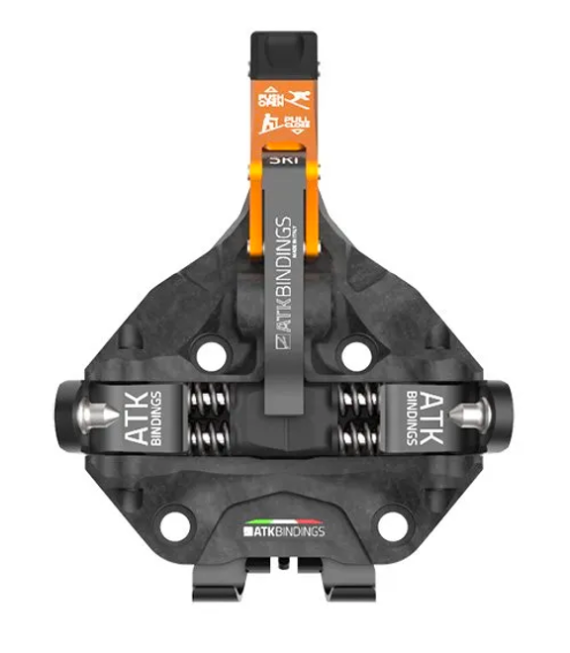
The design and functionality of the rear binding depends on the binding category. But the coupling between the binding and ski boot is always achieved by pushing the boot against the rear locking pins. In the uphill position, we find two different solution to prevent the heel to get jammed into the rear pins:
- Race binding: fixed, non-rotating heel having the heel lift that covers the locking pins
- Touring, speed touring and free touring bindings: Heel that rotates on itself to switch from the uphill to the downhill position
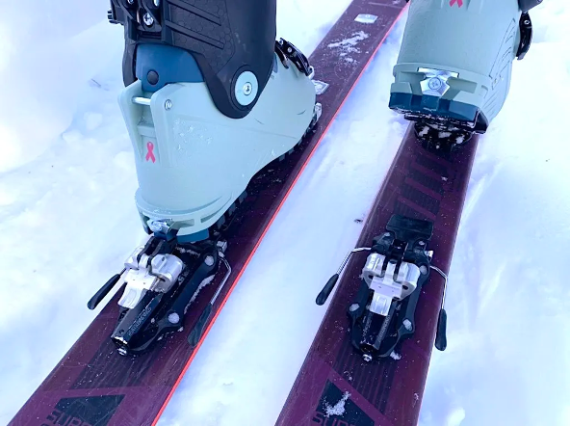
The skin-bindings used Freetouring guarantee the best performance on descent by reducing the torsion of the boot. The small dimension of the rear binding offers an amazing lightness.
For ski touring binding models equipped with multiple heel lifts, which are useful for reducing the foot angle along steep terrain, some manufacturers have introduced an ingenious yet simple magnetic system that keeps the heel lift in position.
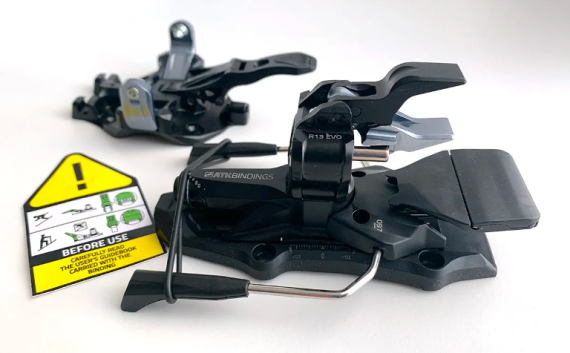
On the most downhill-orientated models, when the ski flexes due to compression or a jump, the rear can move backward thanks to the action of patented systems such as ATK's Elastic Response System® and then returns to its starting position.
One accessory that is more and more integrated into ski touring bindings is the ski brake (or ski stopper). Development has led to the ski brake being closed during the descent phase, while the system is placed in a neutral position during the ascent phase so as not to hinder walking. However, some models with a front ski brake also allow the brake to be activated in the event of a release during the ascent: if the toe box is locked during the ascent phase, the ski brake is ready to open again in the event of accidental release of the boot from the front.
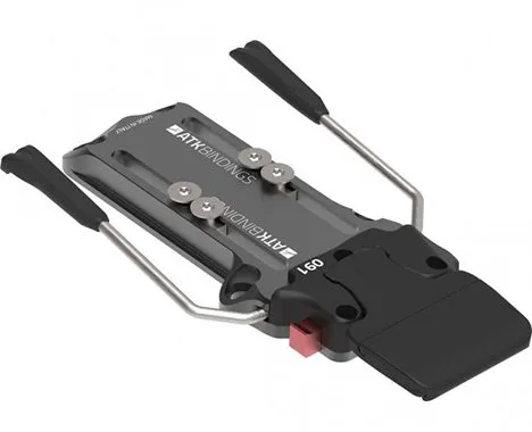
The premise is that ski brakes are mandatory in official ski mountaineering races from 2021. Nevertheless, the debate about their effectiveness is always lively: better with or without? Or is the 'old' harness better? We simply comment on the situation and point out the trend to include the ski brake in almost all models:
- without ski brakes: mostly because you want to save weight, but sooner or later you'll have to install them if you want to race, therefore it’s better to train with ski brakes mounted
- if you ski without a ski brake because you are not racing, you accept the risk of the ski falling off in the event of an accidental release just to save a some weight
- the harness can replace the ski brake in all respects, but it holds the ski to the skier in the event of an avalanche with obvious consequences;
- the ski brake is useful if you occasionally ski on piste, where laces have not been used for several decades
- honestly, the ski brake and the binding itself are so light today that the debate is rather sterile
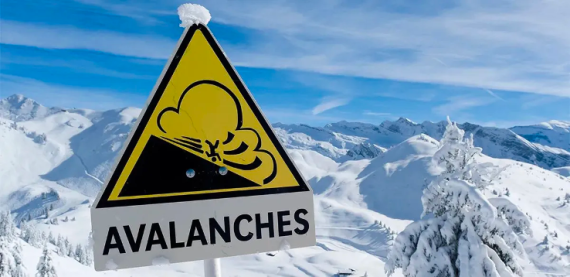
Today we are dealing with a consolidated standard in which ski touring bindings can be divided into four macro-categories, depending on how the ski tourer wishes to interpret the type of ski touring and, last but not least, how light is the overall equipment.
CATEGORY TYPOLOGY
USE-SKIS
WHAT YOU ARE LOOKING FOR
RACE
For athletes taking part in official ski touring competitions.
Light.
SPEED TOURING
For fast ski tourers on routes with large differences in altitude.
Easy handling and low weight.
TOURING
For everyone, from beginners to experts on multi-day tours.
Functionality and reliability in all conditions.
FREE TOURING
For freeriders who tackle steep slopes at high speed and possible jumps.
Downhill fun and uncompromising performance.
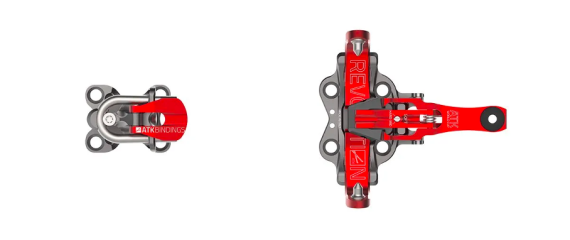
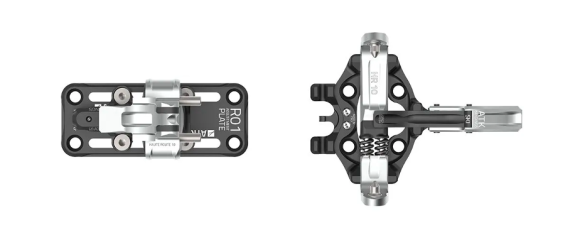
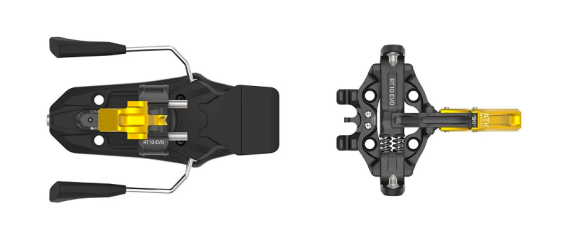
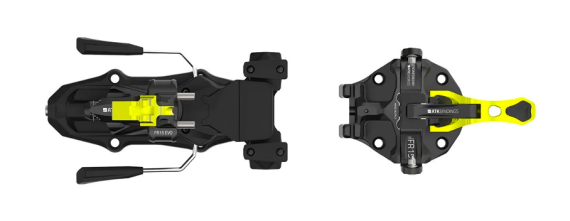
The range of ski touring bindings on the market is indeed very broad as far as manufacturers are concerned. Below, we have summarised some technical parameters that illustrate the differences within the four most common categories.
CATEGORIES
BINDING
WEIGHT
WIDTH
RACE
105 gr-145 gr
< 1000 gr
< 82 mm
Fixed heel cap, heel lift with one position to avoid blocking on the ascent, optional length adjustment plate, ski stopper optional but usually available, maximum supported skier weight up to 80 kg, rarely 90 kg.
CATEGORIES
BINDING
WEIGHT
WIDTH
SPEED TOURING
145 gr-200 gr
800 gr-1500 gr
75 mm-102 mm
Heel rotation, easy heel lift and some length adjustment, ski stopper and crampon space optional, skier weight up to 105 kg supported.
CATEGORIES
BINDING
WEIGHT
WIDTH
TOURING
250 gr - 320 gr
800 gr - 1500 gr
75 mm - 108 mm
Simple, functional, reliable, with various adjustment options also at the rear, ski stopper, space for crampons, suitable for wide skis.
CATEGORIES
BINDING
WEIGHT
WIDTH
FREE TOURING
305 gr - 380 gr
1000 gr - 1700 gr
up to 120 mm
The evolution of touring, suitable for typical deep snow skis, for uncompromising descents and extreme conditions, adjustable for skiers up to 120kg.
Apart from the many details that make a binding very specific, you should bear in mind that the choice of binding for ski touring must be in line with the equipment as a whole, i.e. a rather minimalist model will not suit a ski intended for freeriding and vice versa.
The advice of a specialised dealer is very valuable in these cases. It is as important as a proper maintenance over time, which should include an annual check when the ski season is over.
As well as to check the wear of the front ad rear bushings of the ski boots, which affect the function of the binding.
- ISPO awards
- Mountain sports
- Bike
- Design
- Retail
- Fitness
- Health
- ISPO Job Market
- ISPO Munich
- ISPO Shanghai
- Running
- Brands
- Sustainability
- Olympia
- OutDoor
- Promotion
- Sports Business
- ISPO Textrends
- Triathlon
- Water sports
- Winter sports
- eSports
- SportsTech
- OutDoor by ISPO
- Heroes
- Transformation
- Sport Fashion
- Urban Culture
- Challenges of a CEO
- Trade fairs
- Sports
- Find the Balance
- Product reviews
- Newsletter Exclusive Area
- Magazine




